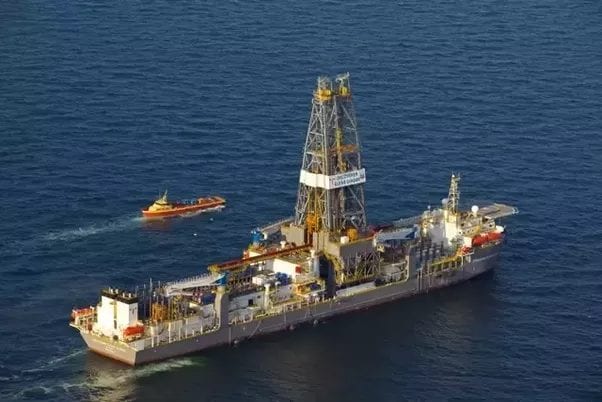The notion that the Guyana basin has been completely de-risked because of the multiple oil discoveries made by US oil major, ExxonMobil, is misleading says a source.
Speaking to OilNOW on condition of anonymity, the source said discoveries by a single company in one block – referring to the Stabroek Block – does not de-risk a basin, and the ongoing claims to Guyana’s maritime space by Venezuela further exacerbates the situation.
“There is continued risk both from the territorial issue and an exploration standpoint. A basin does not become de-risked if you have discoveries in a single block. Remember the entire offshore is huge and it is only within one small area that one company has so far been able to prove,” the source said.
CGX Energy has drilled multiple wells offshore the South American country in search of commercial quantities of crude with no positive results. In 2012 drilling at the Jaguar-1 well on the Georgetown Petroleum Prospecting License was abandoned because it wasn’t safe to go deeper. Drilling at the Eagle-1 location in the Corentyne Basin also proved to be futile. The Eagle-1 well reached a total depth of 4,328 metres but after tests were conducted it was determined that the sandstone was water-bearing.
The company also took a hit financially which saw its shares plunging after coming up dry.
All this came after CGX, in its initial foray offshore Guyana in 2000, had its rig evicted by the Surinamese navy over a territorial claim. This led to a protracted territorial dispute between Guyana and Suriname which ended when Guyana approached the Hamburg, Germany-based International Law of the Sea Tribunal and substantially won its case.
Then in 2013 Venezuela’s navy seized the RV Teknik Perdana survey boat, which was being used by Texas-based Anadarko in search of oil in what Guyana maintains is its waters. The Guyana-Venezuela border controversy has since been referred to the International Court of Justice.
Border controversy between South American oil neighbours headed for ICJ
UK will react firmly if Venezuela violates Guyana territory – British High Commissioner
Guyana fast-tracked Liza development to protect sovereignty
The source said when everything is taken into consideration, it is clear to see that “it’s risky from multiple factors. Not a single risk, but several risk, a strong one being that you have a single company with discoveries so far in one block. You have the (Guyana-Venezuela) territorial issue; things are still in the balance…you’re not sure how that will go. Thirdly, the cost of exploration – Guyana can still be considered high.”
Even with its multiple discoveries in Guyana, starting with Liza-1 in 2015, ExxonMobil came up dry at its Skipjack prospect just over a year later.
However, the company has so far discovered more than 3.2 billion barrels of oil in the 6.6 million acres Stabroek Block which stretches across Guyana’s Exclusive Economic Zone, bordering Venezuela and Suriname. While this is the largest exploration area owned by one operator (in partnership with Hess and CNOOC Nexen) several other companies own blocks in vast areas outside of Stabroek, some of which remain unexplored.



